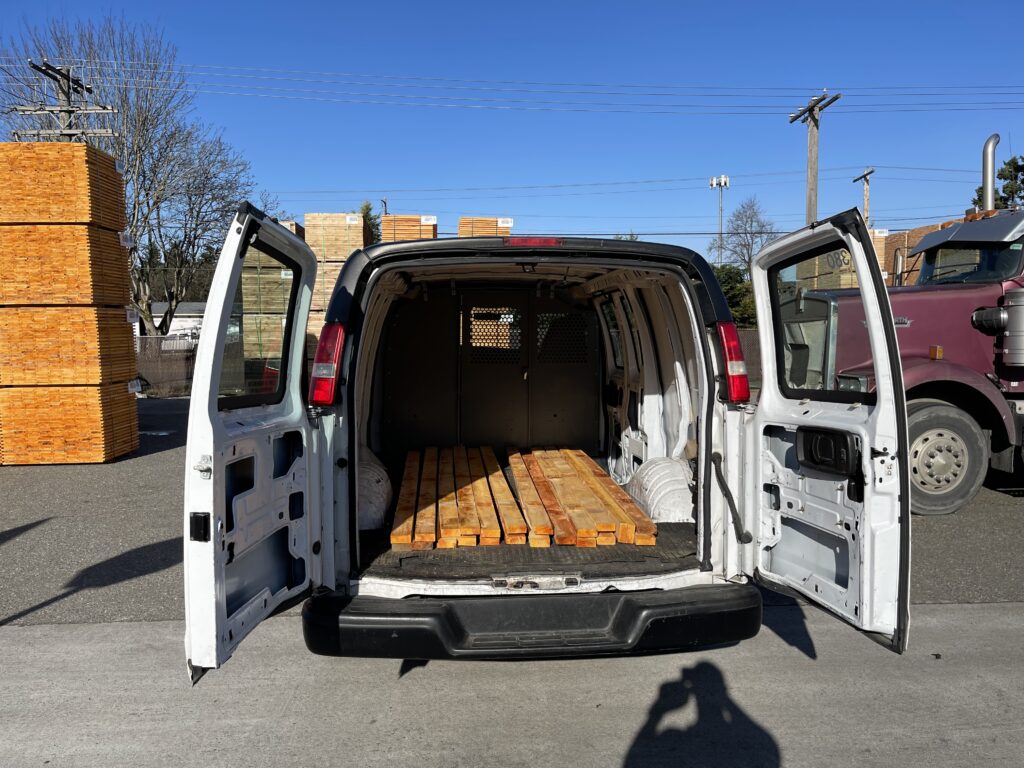August 21, 2023
Performance Modified Wood from Trees Native to the Pacific Northwest for Exterior Construction
ARC Fellow: Kevin Muiruri
Degree Program: Built Environment Ph.D.
Faculty Advisors: Indroneil Ganguly (School of Environmental and Forest Sciences)
Firm: GGN
Firm Advisors: Bernie Alonzo and Keith McPeters
Project dates: Summer 2022 – Spring 2023
Read the Project Report
Read the Journal Submission
View Presentation Slides
Watch the Final Presentation
More about the project:
Landscape Architects have had limited choices for sustainable wood products in the Pacific Northwest region (PNW). Most trees native to this region, with the notable exception of Western red cedar (Thuja plicata), are not well suited to exterior use due to poor weathering properties and or they are soft and wear rapidly. Western red cedar, a native PNW tree, has a long history of exterior use in construction however, the price premium reflected in its cost makes its use cost prohibitive for less premium application. Wood product options for exterior use in the region have shifted from using less-competitive local wood species to importing tropical hardwoods and/or chemically treating non-native softwoods to increase resistance to rot and insect damage. More recently, a new generation of treatments including chemical and thermal modification have been used on wood species grown outside of the region (Hill C. A., 2006).
Chemical treatment of wood, though relatively well-researched and effective at treating the wood (EPA, 2022), has its share of environmental impact through its production processes and the leaching of chemicals into the environment through their long-term use (Washington State Department of Ecology, 2022). As designers look to extend the longevity of wood products, promote sustainable materials, and protect the local environment, while moving beyond local and federal standards, a shift from chemically treated to thermally treated products could prove beneficial in meeting these goals.
Thermal modification is an environmentally friendly process known to effectively improve wood decay resistance; however, it results in a loss of some mechanical properties (Bi, Morrell, Lei, Yan, & Ji, 2022). Hydrothermal treatment, an improvement on the thermal modification process through the addition of steam for more effective heat transfer, improves the modification process and potentially opens more uses for previously underutilized tree species (Ganguly, et al., 2018). Given the overall properties of thermally modified timber (TMT), a potentially good use for TMT products in landscape architecture would be as an exterior decking finish material/wear surface.
The absence of locally produced TMT options in the Pacific Northwest market presents an opportunity to utilize existing commercially viable technologies with a history of performance in combination with Pacific Northwest tree species that are a part of the existing regional forest industry to produce wood products with an extended useful life in exterior applications while also improving the local ecology through restorative forest practices (Carey & Cutis, 1996).
The research in this study explores the potential use in exterior construction of hydrothermally modified wood, derived from tree species native to the Pacific Northwest. A broad study would revolve around the hydrothermal treatment of five species of wood: Western hemlock (Tsuga heterophylla), Douglas fir (Pseudotsuga menziesii), Red alder (Alnus rubra), Oregon ash (Fraxinus latifolia) and Blue-stained Ponderosa pine (Pinus ponderosa). However, this specific research will present data on the process of sourcing, treating, and testing the Red alder.

Figure 1: Donated Red alder from Northwest hardwoods in Centralia, WA. KEVIN MUIRURI

Figure 4: Mechanical testing at WSU based on ASTM D198: Standard Test Methods of Static Tests of Lumber in Structural Sizes. WSU

Figure 10: T-Test data for Modulus of elasticity data compiled using RStudio, photographer. KEVIN MUIRURI
